The first way you succeed at tomatoes is by having realistic expectations, which was the main point of my previous post, “Failing at tomatoes.”
The second way is by learning to manage the things that go wrong with your tomato plants and their fruit, and this is the topic today.
Mid-summer decline
It is an unrealistic expectation to think that you can start a tomato plant in March and still have a green vine full of large, ripening fruit in September. If you plant five tomato plants in March, you might end up with one or two that still look good in August.
How to deal with that? If you want good-looking, productive plants all the way through the end of summer and fall, then you must plant new tomatoes around June. These are your fall tomatoes.
I visited a farmer friend on Tuesday. Roy Wilburn has grown thousands of acres of tomatoes in California and Baja since the 1980s. Today he farms in Poway, San Diego County. His routine is to plant a first round of tomatoes in January, then continue planting new rows about every month until his final planting in early July.
The photo at the top of the page shows some of Roy’s tomatoes that are currently in peak production. On the other hand, below is a photo showing a row from his latest, most recent planting (early July) next to an old row of tomatoes planted in the spring that he’s about to remove:
Bottom line: Accept that most of your early spring tomato plants are going to look rough and produce little in late summer and fall. Plant a second round of tomatoes for the latter half of the warm season if you desire green and productive plants then.
Blossom end rot
So many ideas float around about why some tomatoes get rotten spots on their bottoms. Researchers are certain that tomatoes with “blossom end rot” have less calcium than other tomatoes, but why that is and how to fix it is not always known.
My own best remedy is to grow varieties that are less susceptible. I’ve seen in my yard and elsewhere that some varieties get it much more than others. I’ve seen that San Marzano is susceptible to BER, for example. Others have observed that Better Boy and Big Beef are also susceptible.
Mountain Fresh seems to be rather resistant. This is one of Farmer Roy’s favorite varieties. I saw zero BER on his Mountain Fresh tomatoes this week.
But when I asked him how to avoid the problem, he said that in addition to variety choice, watering enough makes a huge difference. He thinks that it’s especially important to water enough when a fruit is early in development. This will allow the plant to take up sufficient calcium from the soil in order to build the cell walls of the tomato fruit.
Skin cracking
My tomatoes have had more skin cracking than usual this summer. One time concentric cracks around the stems of some tomatoes appeared after I watered my plants overhead — an extra watering beyond their usual drip irrigation. This suggests that it occurred due to an expansion of the skin through the fruit taking in the extra water.
I’ve also had cracks radiate from the stems. I read that this can happen when temperatures are over 90 or the fruit is in too much sunlight. Not sure if this is true, but Roy pulls 30 percent shade cloth over his tomatoes whenever the temperature reaches 90 and he doesn’t get any cracking on his fruit.
Varieties also differ in their tendency to crack, I’ve seen. And Roy agrees with this as well.
Sunscald
Shading tomatoes at temperatures over 90 also prevents sunscald. The shading can be done with shade cloth (or anything else) if the plant’s foliage isn’t dense enough. Higher soil fertility or more water might help in growing denser foliage on a tomato plant that will shade its fruit.
Root knot nematodes
One reason that some of my tomato plants don’t have dense foliage is that they are fighting root knot nematodes, which are attacking their roots.
(“What are root knot nematodes?”)
If soil is infested with RKN, you should plant only tomato varieties that have resistance. The plant label or seed packet should inform you if a variety has such resistance.
In addition, you can plant in a different spot in your yard or plant in containers (where the nematodes don’t exist).
Roy deals with root knot nematodes in his soil by planting resistant varieties of tomatoes and by applying beneficial nematodes to all planting holes. He uses Fungus Gnat and Root Knot Exterminator, which many independent garden centers stock.
Mites
I’ve found that an effective way to prevent mites from overtaking a tomato plant is to notice their presence early and then spray the foliage with water daily for a week or so. Mites like dusty leaves; don’t allow them to have that.
(Here’s more about managing mites.)
(See photos of tomato plants with mites and the other issues above in my previous post, “Failing at tomatoes.”)
Critters eating tomatoes
Mites feed on leaves, but other critters love tomato fruit. It might be squirrels, rats, and who knows what else. If I see nibbled fruit, my main strategy is to begin picking the other fruit as early as possible. You can pick tomatoes as soon as they have any pink color and they’ll ripen well on the kitchen counter.
You might also try protecting the fruit with something, such as plastic bottles that are cut to fit and expand with the fruit. A fellow gardener and Yard Posts reader in Orange County has had success with this method:
And of course, you can also attempt to directly manage the animal that is eating your fruit, if you know which it is.
No fruit
I have one plant this year that has zero fruit.
I have heard people say this can be caused by too much nitrogen fertilization, but I’ve never seen evidence for that. I’ve grown tomato plants in soil amended with heaps of manure and they made heaps of fruit. And the single plant that is barren in my yard this summer is in the middle of a row of tomato plants that are all producing.
A plant that drops all its blossoms is most likely just a variety that isn’t suited to your yard’s climate. Some tomato varieties won’t set fruit well when it’s hot, for example. If your yard is hot (frequently over 90 in the summer), then look for varieties that claim to set well in such conditions.
My yard is hot so any variety that has done well in mine is likely to do well in your hot yard. See these posts for some examples: “‘San Diego’ tomatoes,” and “Tomato varieties for Southern California, 2019.”
Varieties
Finding varieties that are best suited for your yard’s exact conditions — and your gardening style and your taste buds — takes trial and error time, but it does pay off big in the long run.
After growing untold numbers of tomato varieties, Farmer Roy has settled on only two that provide high production of quality, large tomatoes in his location: Mountain Fresh and BHN 1021.
I just ordered seeds of those two so I can give them a try in my garden next year.
All of my Yard Posts are listed HERE

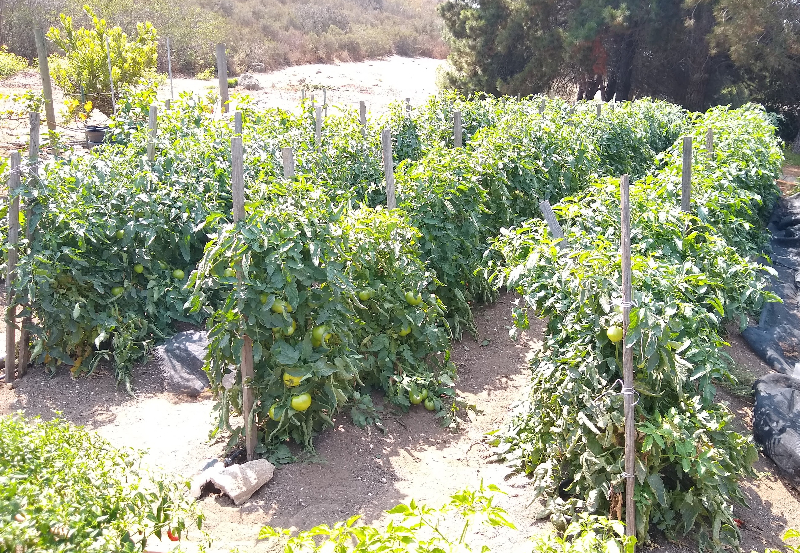
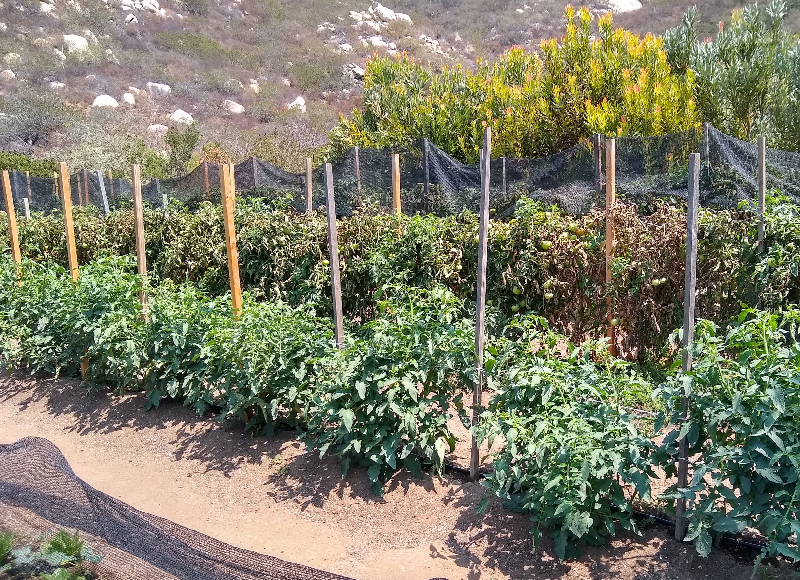
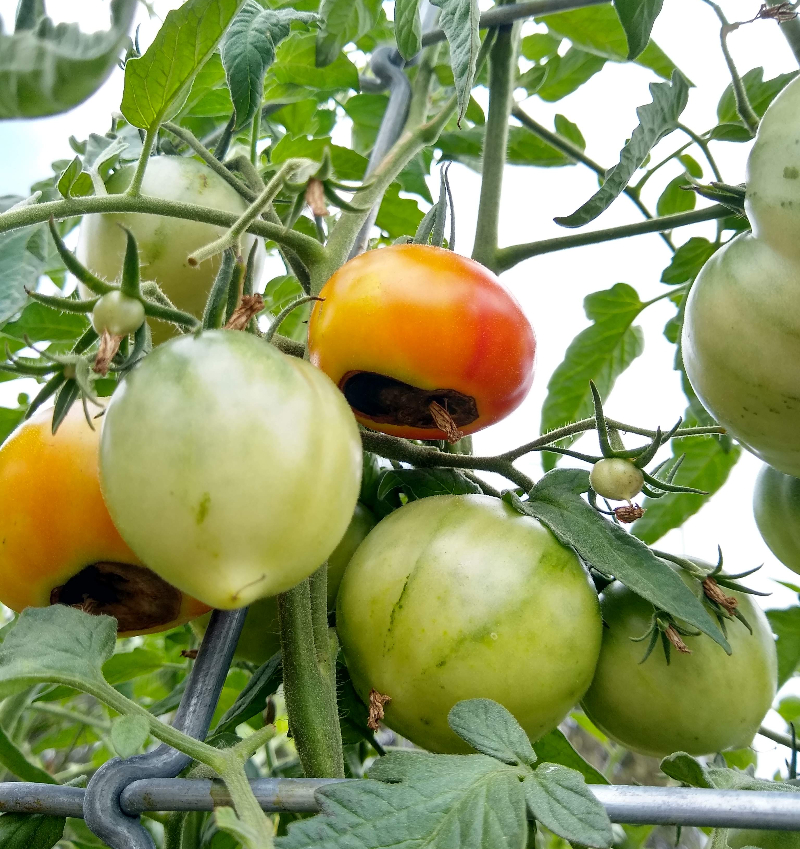
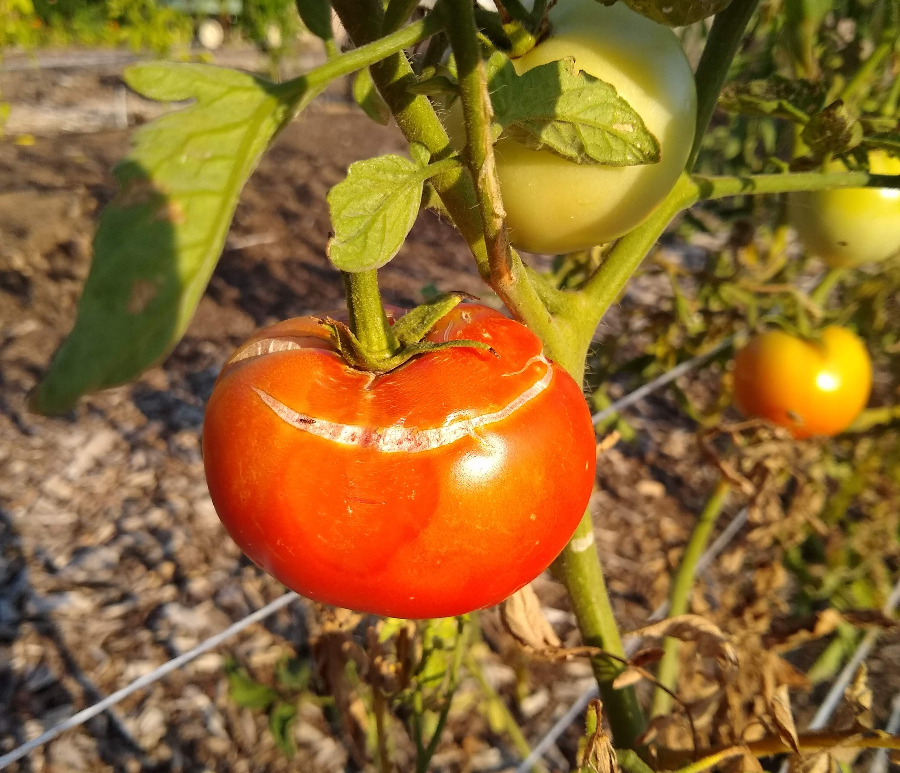
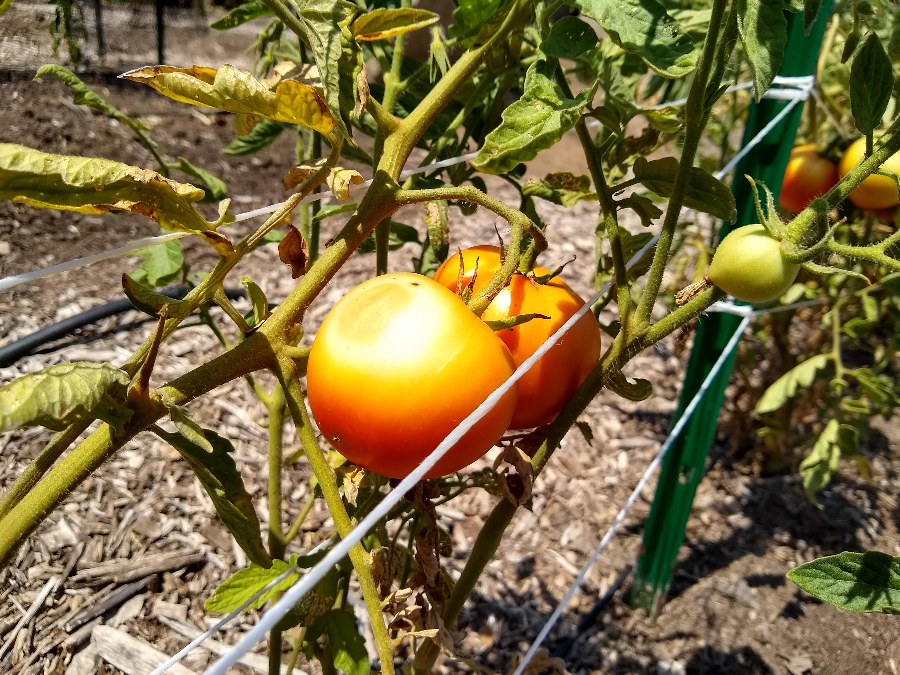
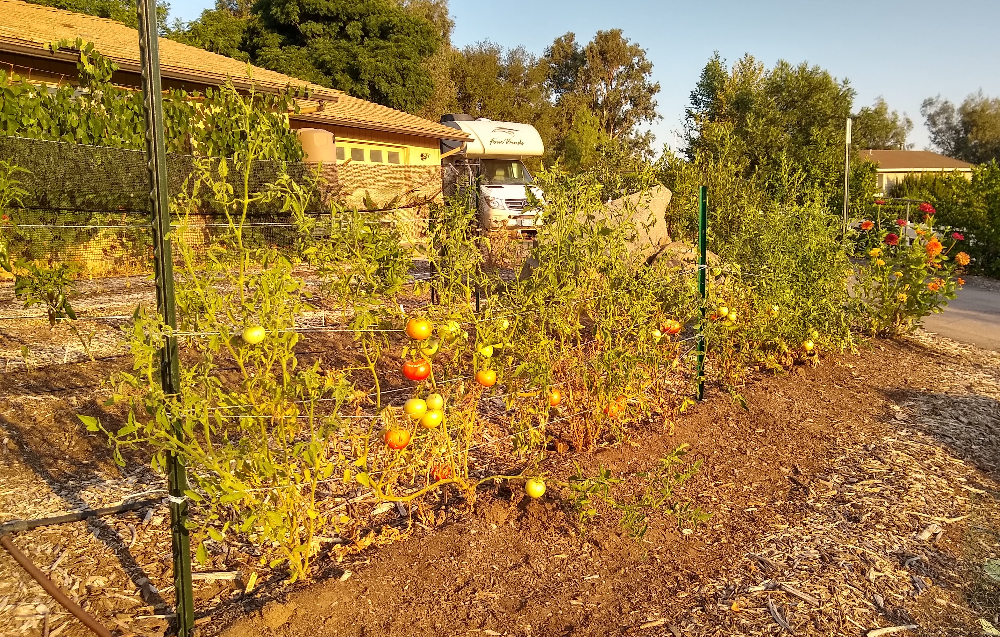
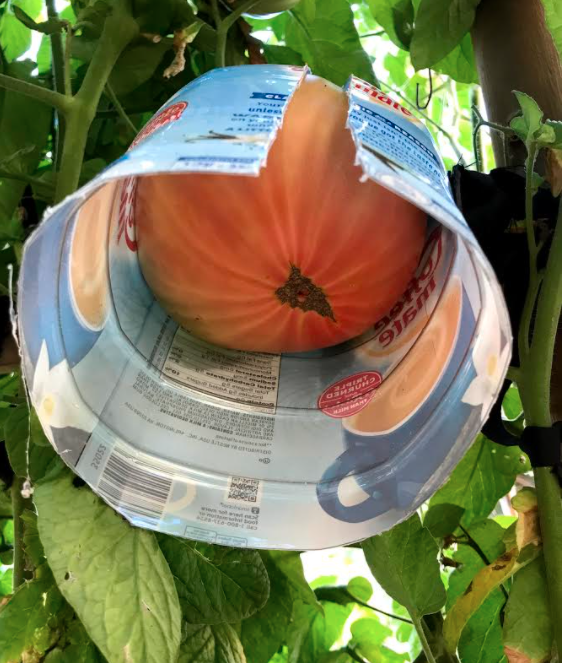
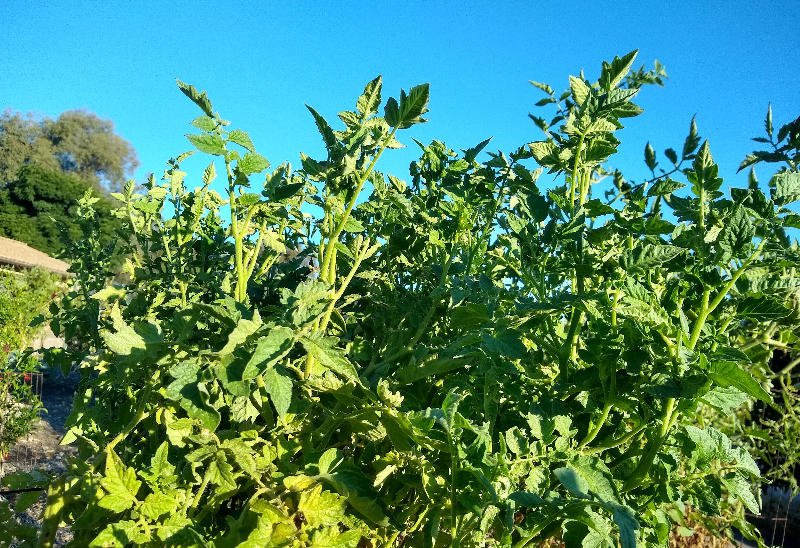
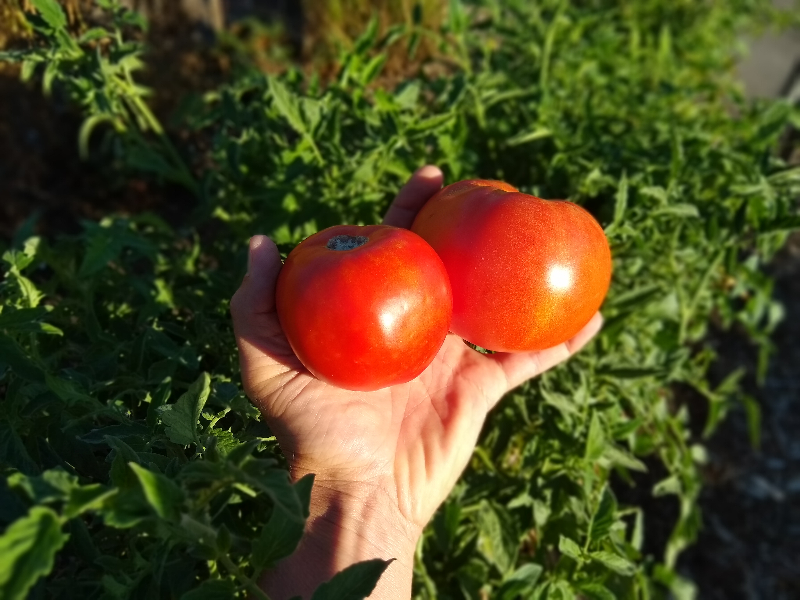


Thanks, Greg! I messed up and when the temp hit upper 90’s this week I got sun scald on a couple of the lower more exposed beauties. I am making a check list for next year with your insights. As each year goes by we learn more and more from you and your pertinent articles. Keep up the great work and enjoy the fruits of your labor as we are!!!
Art
Thank you, Art. What an encouraging message to receive!
Great information – I look forward to your Saturday posts. I had my most successful garden ever this year. I’m in Simi Valley. But one tomato plant – Old German – produced one beautiful tomato and that is all. I am reassured by reading that this happens occasionally.
Hi Vickie,
Great to hear you had your best garden ever this year. You must be eating well! I probably won’t bother trying Old German if it didn’t produce much for you in Simi. Our climates are similar.
Always great information Greg, thanks so much! Did you enjoy the flavor of the Mountain Fresh tomato? Tomatoes are my favorite crop to grow & eat, so flavor is very important. I bought several Momotaro tomatoes at the Santa Monica farmers market last year, and was amazed with the flavor. I’m growing this variety this year, and they are easy to grow and very flavorful.
– Laurie in San Juan Capistrano
Hi Laurie,
My wife and I were talking about the Mountain Fresh flavor yesterday. The ones we have eaten have certainly been good but not amazing for flavor. They’re more of a solid, basic, production tomato. They remind me of a variety that would be used for burgers at In N Out.
Momotaro tastes better and unique by comparison, to me.
You growing any other good ones this summer?
Thanks for your reply Greg. I’m also growing Better Boy and cherry tomatoes (which are plentiful, but my Momotaro have definitely been the tastiest!
I encountered an interesting incident the other week on my Early Girl tomato… some foliage and smaller tomatoes were showing signs of tomato worm damage, after finally locating the culprit I poked it with a knife point after putting it on the ground and figured Mother Nature would do the rest. A few hours later I returned to see it covered by yellow jackets, biting it. I buried it. The next morning while inspecting the tomato plants for additional worms I saw some yellow jackets flying in the canopy and there was the remaining carcass of a small tomato worm. I see them on a regular basis scouting the plants. Since their smell receptors are thousands times stronger than mine, I figure they can be my little bloodhounds.
Hi Lalo,
I’ve never seen this. Very interesting!
Hi Greg, thank you for all your tips on gardening. I just started this year planting a few new tomato plants to get me thru the fall. By June my original plantings are pretty much done (early girl and sun golds). I will try the fabric coverings next year to help my March tomatoes last a little longer. But a second crop will be automatic from now on. I have followed your watering schedule for my 9 year old Hass avocado tree. After the awful heat wave we had in the 100’s, about 5 years ago. My tree was badly damaged. It has helped keep my tree hydrated. My tree shows no signs of stress from this years very hot summer.
I live about 30 minutes from downtown Los Angeles and its been pretty hot. Thank you again for sharing your knowledge with us.
Thanks for the feedback, Diana!
I’m new at gardening. Mid March I planted Black Prince and German Queen because I thought heirlooms were unique (only to find out it means their seeds can produce the same tomatoes). Any experience with these and what issues they may have that I can prevent or look for?
As for successive plantings, I thought indeterminate tomatoes continue to fruit until weather forbids. I’m in San Fernando Valley. Thanks!!
Hi Greg,
I found after I started adding pulverized eggshells to my planting mix, I haven’t seen any blossom end rot in my tomatoes.
After a few years of container gardening, and reading your blog posts, I decided to install a small raised bed garden in my backyard. I’m making two 3×6 beds. I will be planting tomatoes, cucumbers, chili peppers, beans, kale, swiss chard, salad greens, basil etc., I am not sure which type of drip line to install, one of those porous rubber tubes, or the plastic tubing with 0.5 gph emitters spaced 6/9/12 inches apart. What would you recommend?
Hi Vasantha,
Congratulations on your new raised beds (when you get them done)! I would go with the plastic tubing with 0.5 GPH emitters spaced 6 inches apart. Usually, raised beds are filled with a porous mix and if the emitters are spaced farther apart then the “soil” doesn’t get broadly wetted because the water percolates nearly straight down.
Hi Greg
I have planted some Heirloom tomatoes in 15 gallon containers and I give each plant one gallon of water every three days. I am experiencing some vertical skin cracking and I am wondering if my watering plan is causing this condition. OBTW, when I do the finger test down to two inches, it’s dry, but when I push my moisture meter down eight inches, it registers a strong moist condition. I appreciate your thoughts
Hi All! Thought I would share that I have had good success with an heirloom variety called Purple Bumble. I’m just off the beach and really struggle with powdery mildew.
Would love to have suggestions for other varieties from anyone who grows tomatoes very close to the beach.
Thanks Greg, your website is so helpful and encouraging.
Hi Greg,
We planted a Reed avocado last November. At that time it was about 4.5 ft. tall. It has grown well, and about three months ago I topped it at 6.5 ft. We are in Sierra Madre, so have had it covered with shade cloth during these hot months. However, we didn’t remove the stake it came with; only cut the tight ties, and used a short bungie cord to hold it. But now we have a problem, in that it won’t stand up on it’s own when we removed the stake. It just falls over and leans on a nearby fence. So I hope you can help us with a solution.